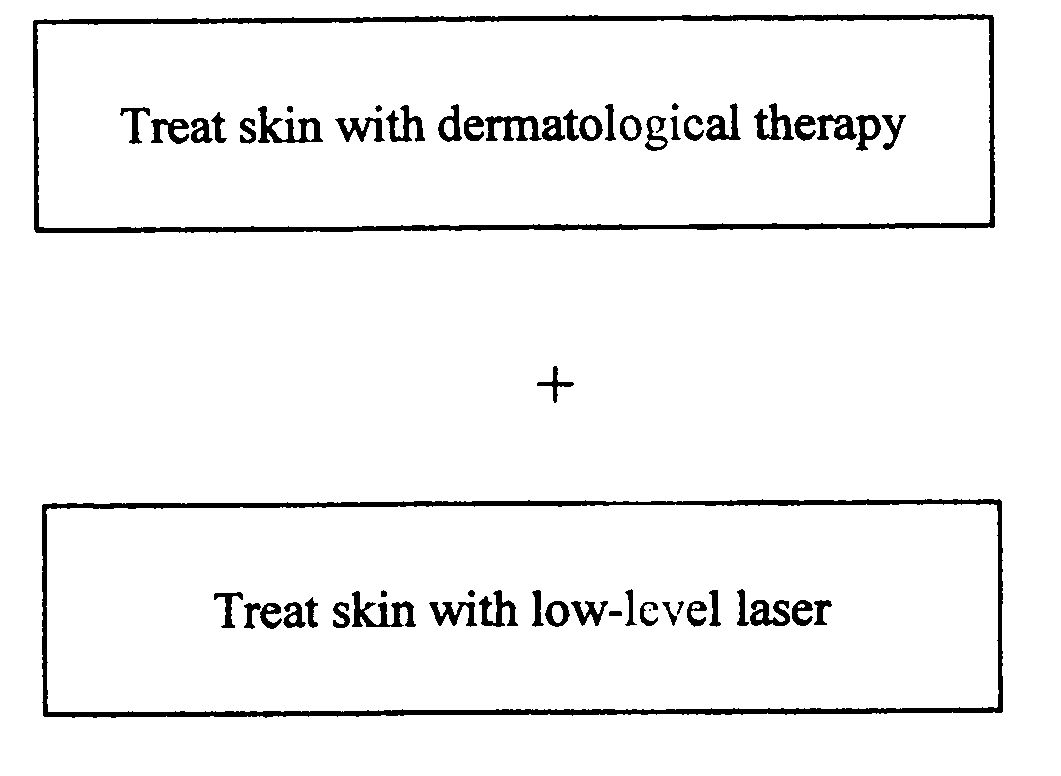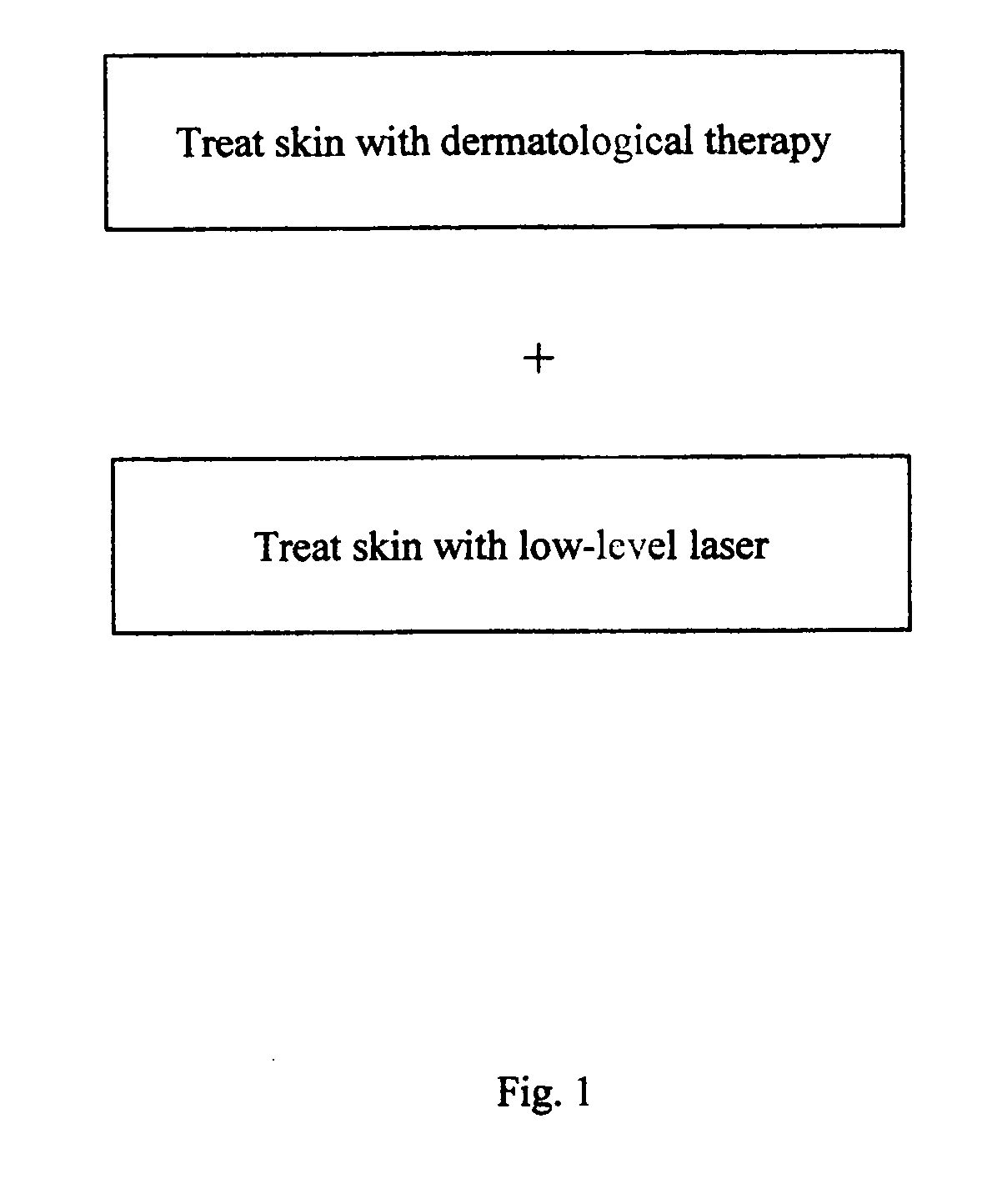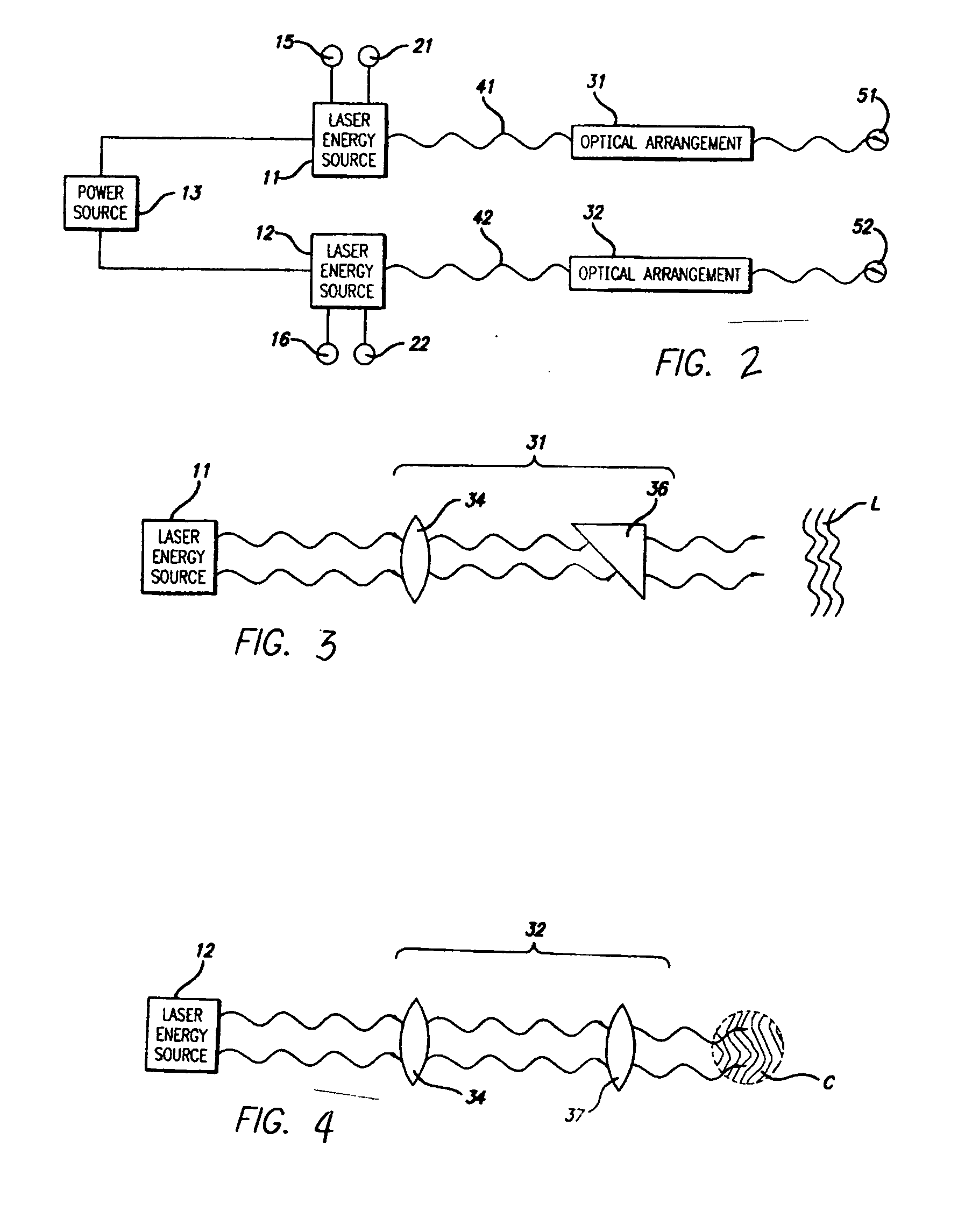Method for dermatology therapies in combination with low level laser treatments
a dermatology and laser treatment technology, applied in the field of dermatological surgery and therapy, can solve the problems of patient skin being unsightly for a period of time, unable to correct certain types of conditions without further destruction of surrounding skin structures, and unable to achieve the effect of promoting faster wound healing and alleviating pain
- Summary
- Abstract
- Description
- Claims
- Application Information
AI Technical Summary
Benefits of technology
Problems solved by technology
Method used
Image
Examples
example 1
Hypertrophic Burn Treatment
[0033] Hypertrophic scars that are woody and elevated are treated in consort with laser or IPL by triple stacking through the rigid scar. The scar chars during treatment, which flattens the elevated tissue. Immediate use of LLLT reduces inflammation which can contribute to further keloid formations. LLLT further prevents water influx into the scar which can cause expansion of the flattened tissue. While normally five to seven treatments are needed to ablate a hypertrophic scar, the patient achieves a superior cosmetic appearance, significant flattening, softening reduced itching and burning sensations, as well as rapid healing in two or three treatments.
example 2
Actinic Chelitis Treatment
[0034] Male patent presented with pre-operative diagnosis of squamous cell carcinoma of the lower lateral right lip. A wide local excision was made excising residual squamous cell carcinoma with frozen section control and tissue rearrangement. Pathology results showed superficially invasive squamous cell carcinoma with multiple sites of carcinoma in situ or other premalignant lesions. Patient was then scheduled for total lip excision. An alternative course of treatment was given instead, using a combination of LLLT, IPL, ALA and photodynamic therapy (PDT). In the first of two treatments, the area was pre-treated with LLLT to avoid spontaneous blistering of the mucosal vascular lip tissue, which would otherwise have eliminated the application of ALA, which cannot be applied to broken tissue. The ALA was applied to the lip and allowed to incubate for 8 hours. The ALA was cleansed from the site and Blu-U-Light was applied in a phase called activation. LLLT wa...
example 3
Scar Treatment Using a Combination of Cryo, IPL and LLLT Treatments
[0035] A keloid scar was pre-treated with LLLT. The scar was then treated with IPL triple-stacked pulsing to burn through the elevated scar. The tissue charred, with an immediate flattening of the tissue. Immediately following the charring response, the scar was treated with LLLT. The scar was also treated to reduce heat retention, preferably with a cryogenic treatment at −30 using a Zimmer Elektromedizin Cryo-5 unit. Tissue treated as such virtually eliminates any additional keloid formation or a worsening of the hypertrophic scar. No blistering is observed. ALA was applied to the scar and allowed to incubate for 8 hours. The ALA was cleansed from the site and activated with Blu-light, followed by a less aggressive IPL treatment with double-stacked pulsing. After activation, from 2-10 minutes, the tissue was again cooled for several minutes. The scars remained flattened and no water influxed into the scar so that c...
PUM
 Login to View More
Login to View More Abstract
Description
Claims
Application Information
 Login to View More
Login to View More - R&D
- Intellectual Property
- Life Sciences
- Materials
- Tech Scout
- Unparalleled Data Quality
- Higher Quality Content
- 60% Fewer Hallucinations
Browse by: Latest US Patents, China's latest patents, Technical Efficacy Thesaurus, Application Domain, Technology Topic, Popular Technical Reports.
© 2025 PatSnap. All rights reserved.Legal|Privacy policy|Modern Slavery Act Transparency Statement|Sitemap|About US| Contact US: help@patsnap.com



